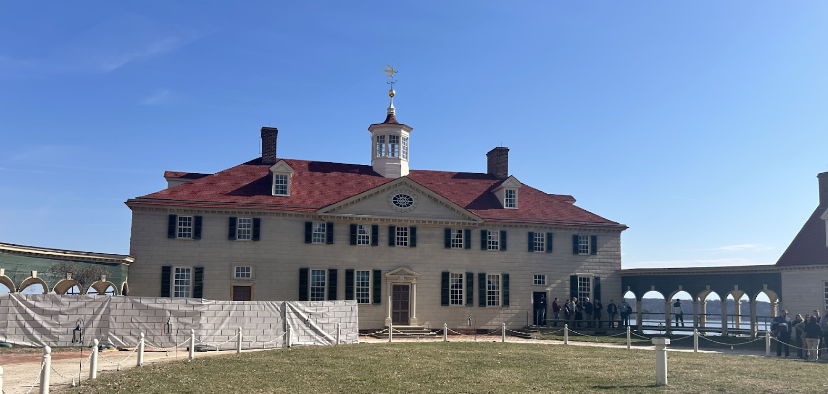Student Group Visits Mount Vernon, Learns about W&L and Slavery
Student Group Visits Mount Vernon, Learns about W&L and Slavery
Students for Historical Preservation explored W&L’s special connections with George Washington’s home.
(Students gather around a diorama of Mt. Vernon as the tour guide identifies different structures. Source: The Spectator)
On February 26, 2024, members of Students for Historical Preservation (SHP) — a Washington and Lee University student group — enjoyed a tour of Mount Vernon, the plantation home of W&L’s namesake benefactor.
The students toured the house, grounds, and tomb of George Washington. The private tour, organized by SHP president Kamron Spivey, ‘24, emphasized the connection between W&L and Washington.
For example, the guide pointed out a boxwood shrubbery that was gifted to Washington by Henry “Light-Horse Harry” Lee, father of Robert E. Lee. Henry Lee is entombed in Lee Chapel, National Historic Landmark.
(Students stand in front of the boxwood gifted to Washington by “Light Horse Harry” Lee. Source: The Spectator)
At the Mount Vernon Museum, the group saw original portraits of Washington’s wife, Martha Dandridge Custis, his adopted children, John Custis and Martha Custis, and former comrade-in-arms, the Marquis de Lafayette; each portrait is on loan from Washington and Lee University.
The university also owns the accompanying Charles Wilson Peale portrait of a young Colonel Washington, which was loaned to Mount Vernon from 2018 until 2023.
(Peale portrait of the Marquis de Lafeytte on loan to Mt. Vernon from Washington and Lee University. Source: The Spectator)
Many original items remain at Mount Vernon for viewing, such as the bed where Washington died and the desk where he wrote his will — which stated that his 123 slaves would be freed upon Martha Washington’s death.
The students also toured the slave quarters and learned about their daily work on Washington’s estate. Betty Brown, the tour guide, emphasized Mount Vernon’s efforts to honor both Washington and enslaved people. “We have a very good enslaved people of Mount Vernon tour,” Brown said. “We try to elevate the lives of the enslaved because, without their labor, Washington would not have had time or opportunity to volunteer to serve his country as he did.”
“And so, we are trying to help people understand that enslaved people are also founders of our country,” the guide continued. “We don’t want to denigrate Washington; we want to elevate the enslaved people.”
During the tour, Brown distinguished between restoration, reconstruction, and replication. All three methods are employed at historic sites to better understand and present buildings and furnishings that are either in disrepair or no longer extant. While most of the Mt. Vernon mansion is restored from the original 18th century structure, many of the slave dwellings and outbuildings have been erected to represent what the site may have originally looked like.
Brown also discussed Mt. Vernon’s three-year preservation and “Revitalization” initiative, which has focused on repairing the mansion’s framework and foundation, as well as relocating its HVAC system out of the cellar.
Washington intermittently resided at the large plantation, located 15 miles from Washington, D.C., for 45 years. While president, he remarked that he would “rather be at Mount Vernon with a friend or two about me than to be attended at the Seat of Government by the Officers of State and the Representatives of every Power in Europe.”
This is SHP’s second year visiting Mt. Vernon. They plan to visit Thomas Jefferson’s Monticello next month, and New Market Battlefield in May.
(Mount Vernon on February 26, 2024. Part of the house is closed for restoration. Source: The Spectator)





